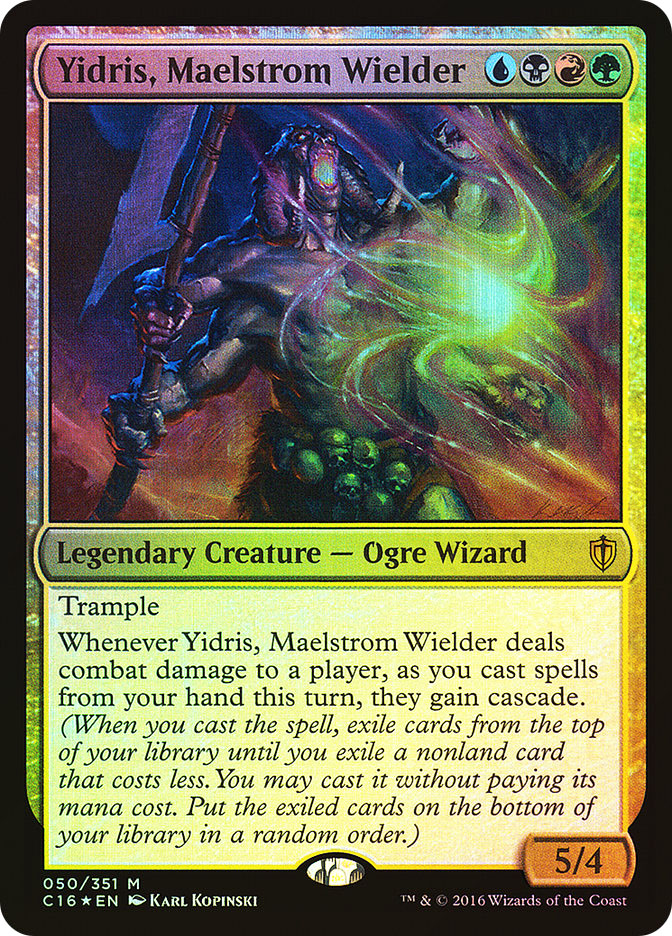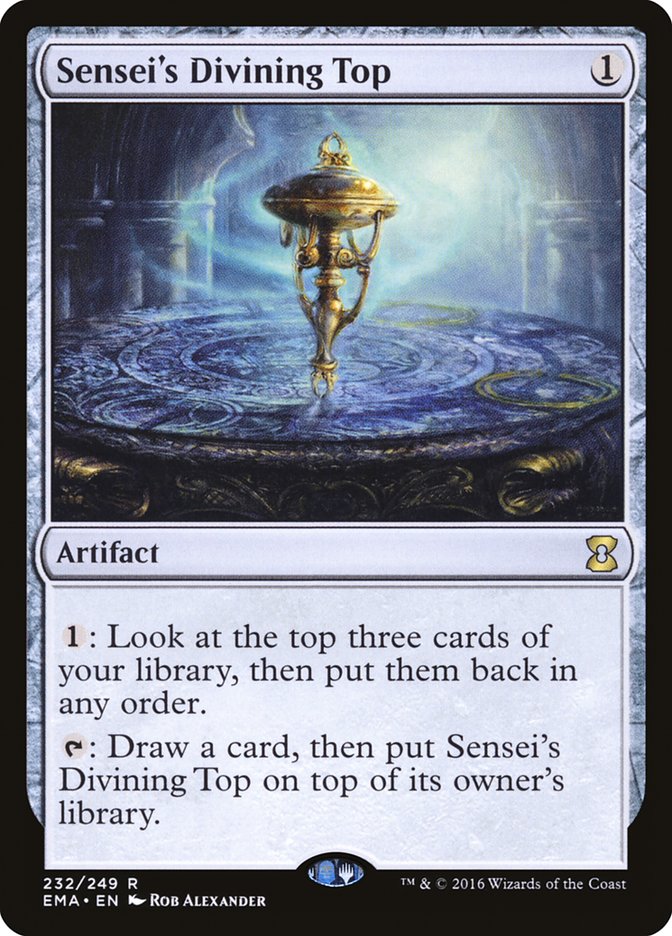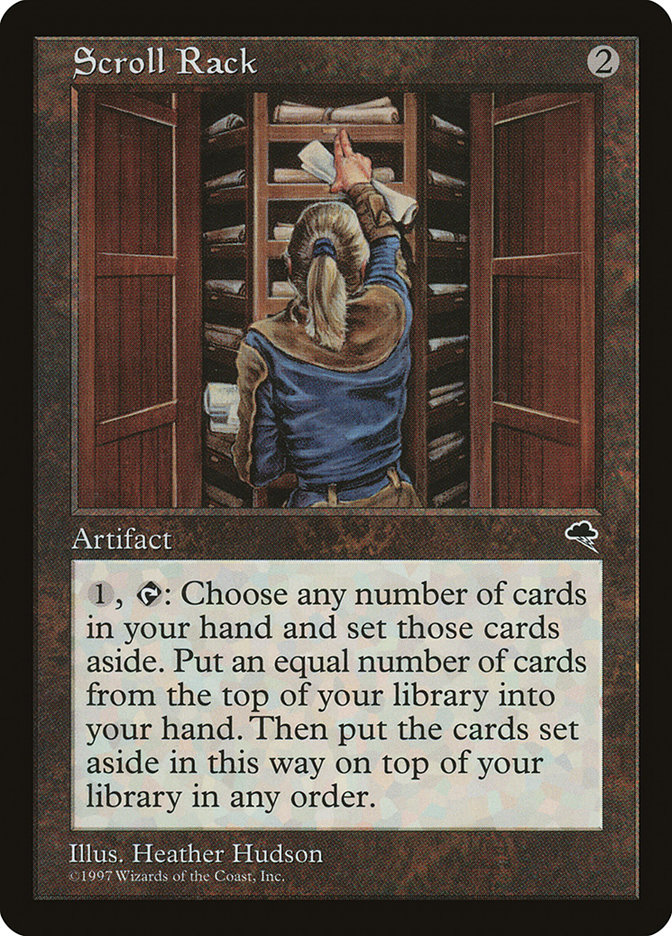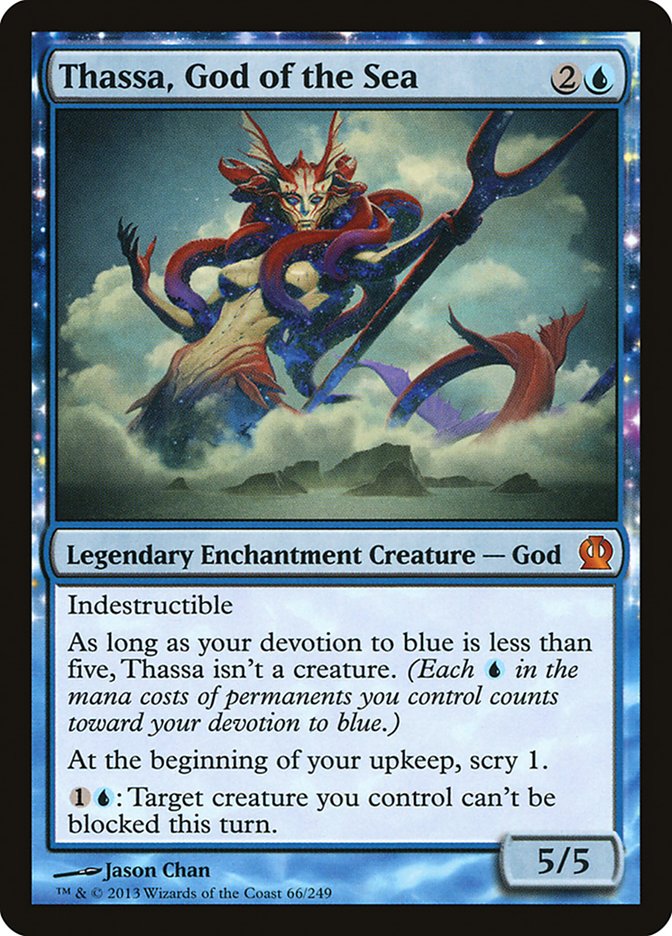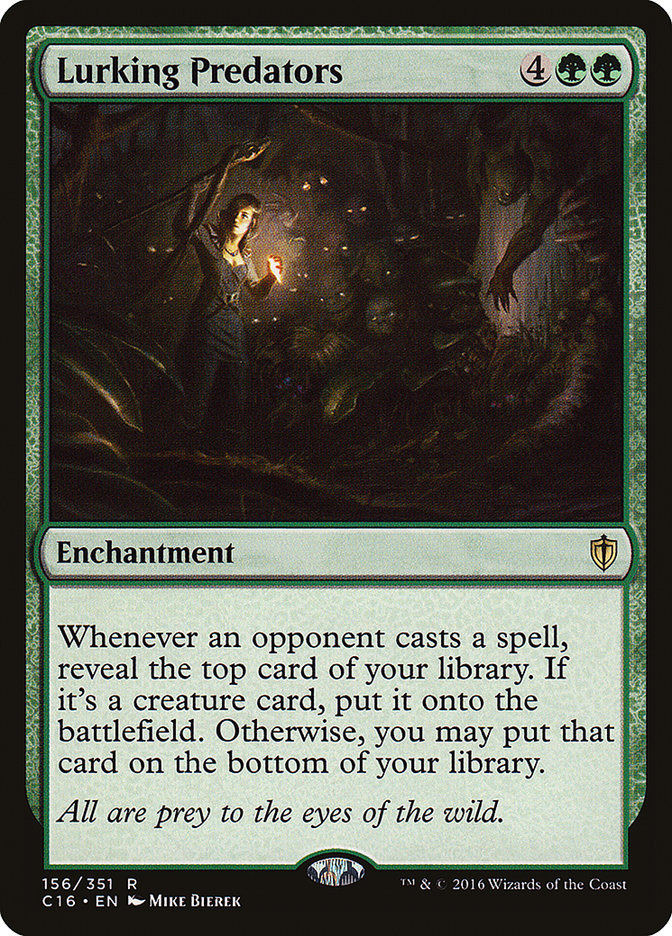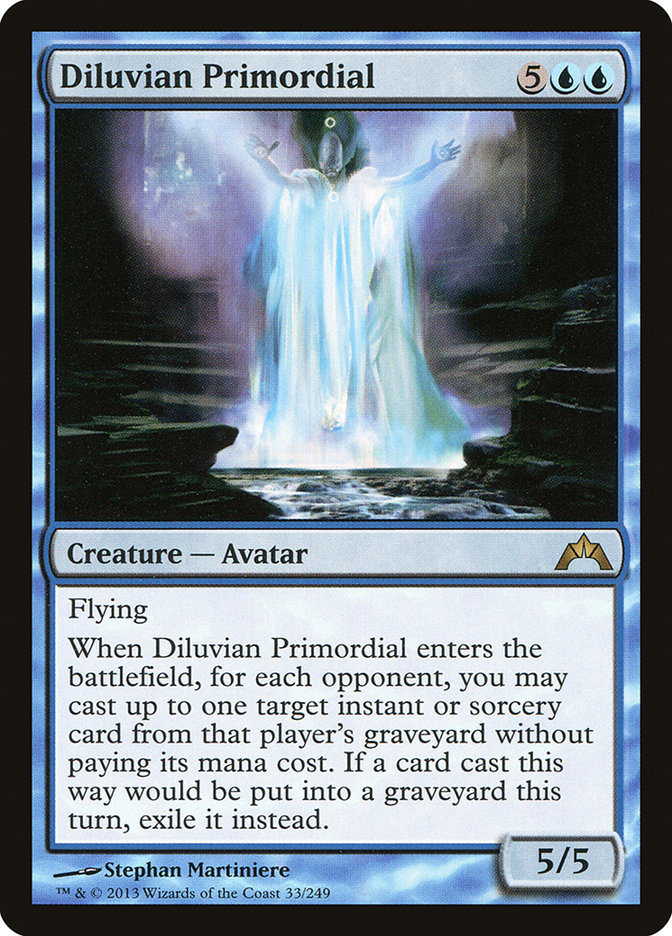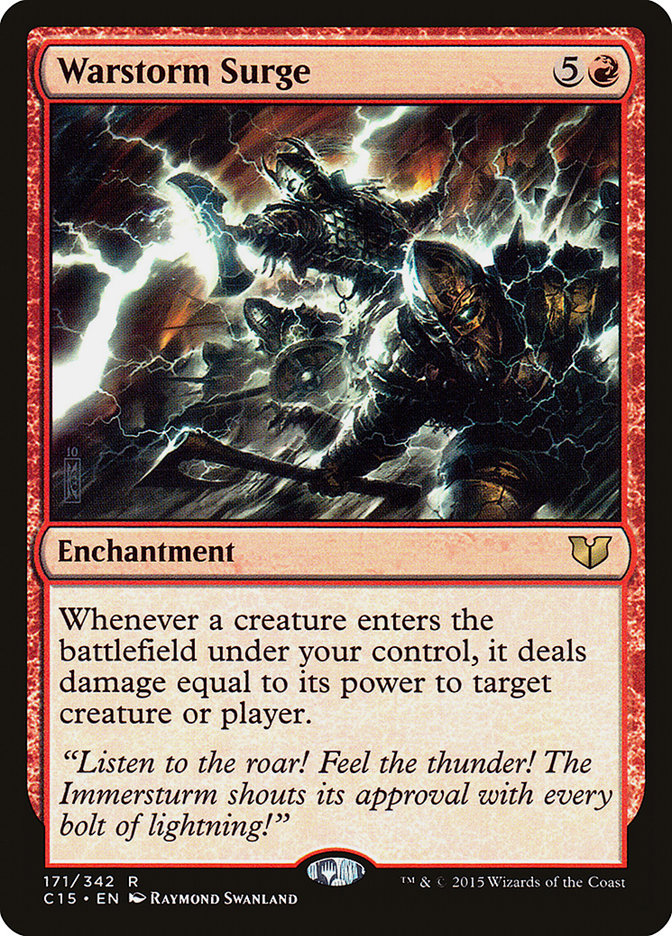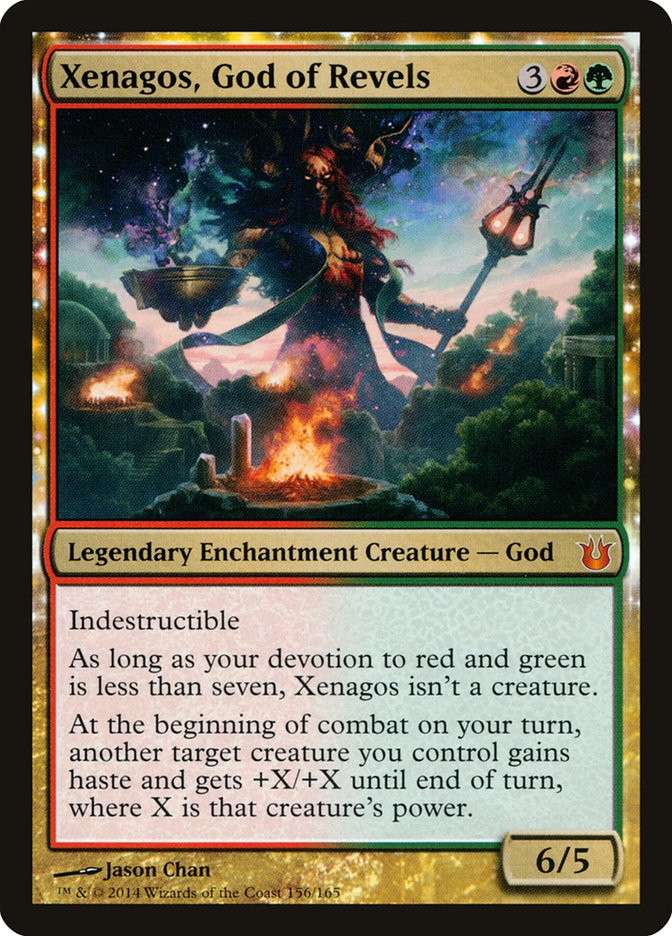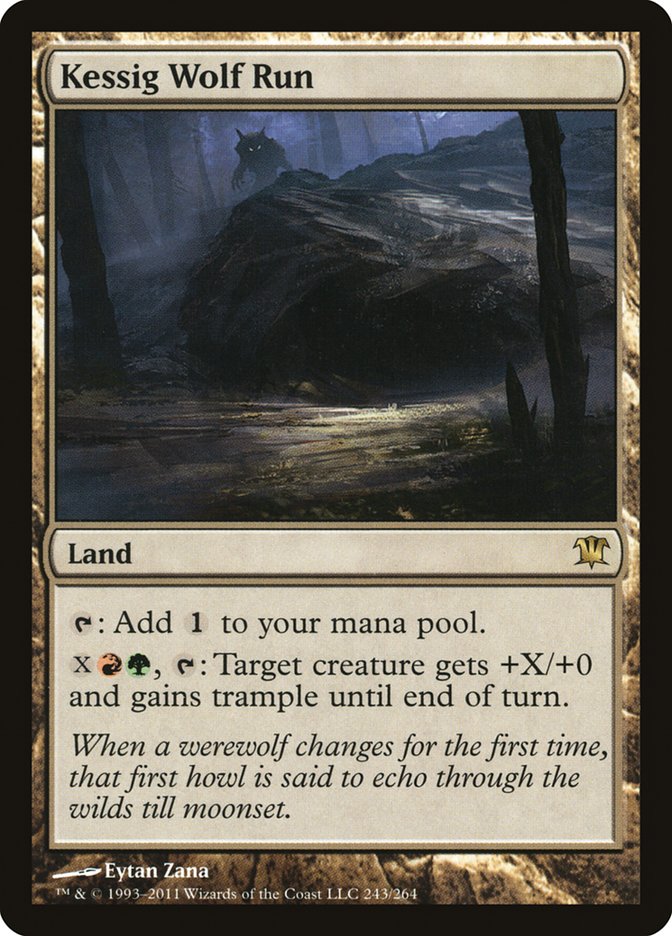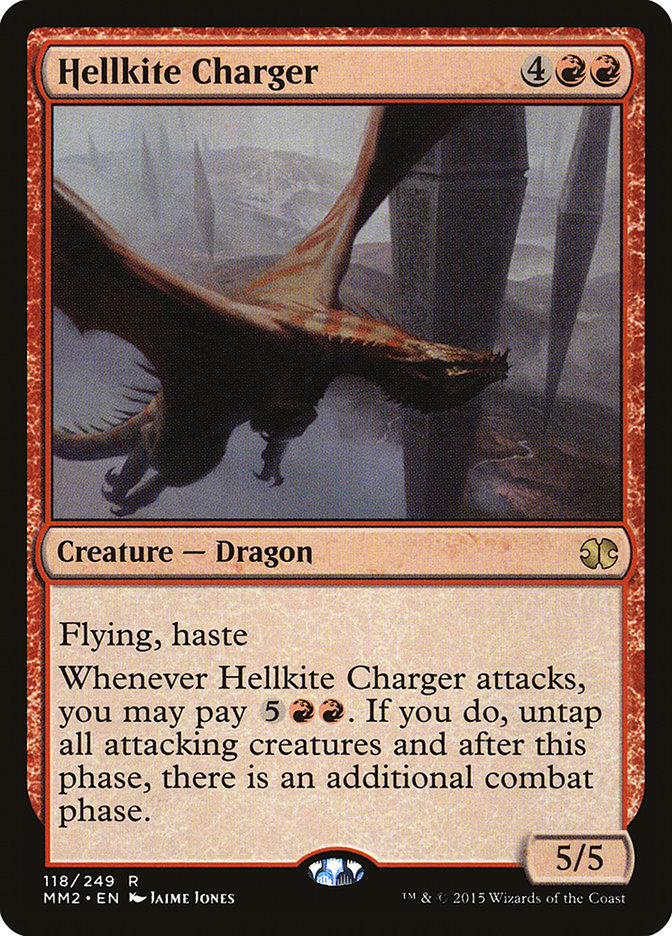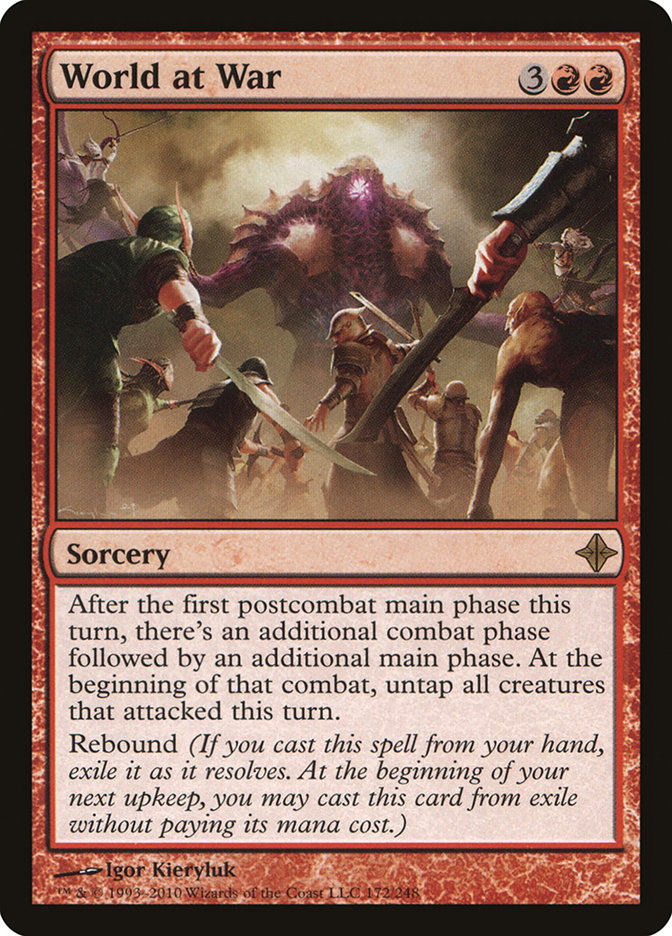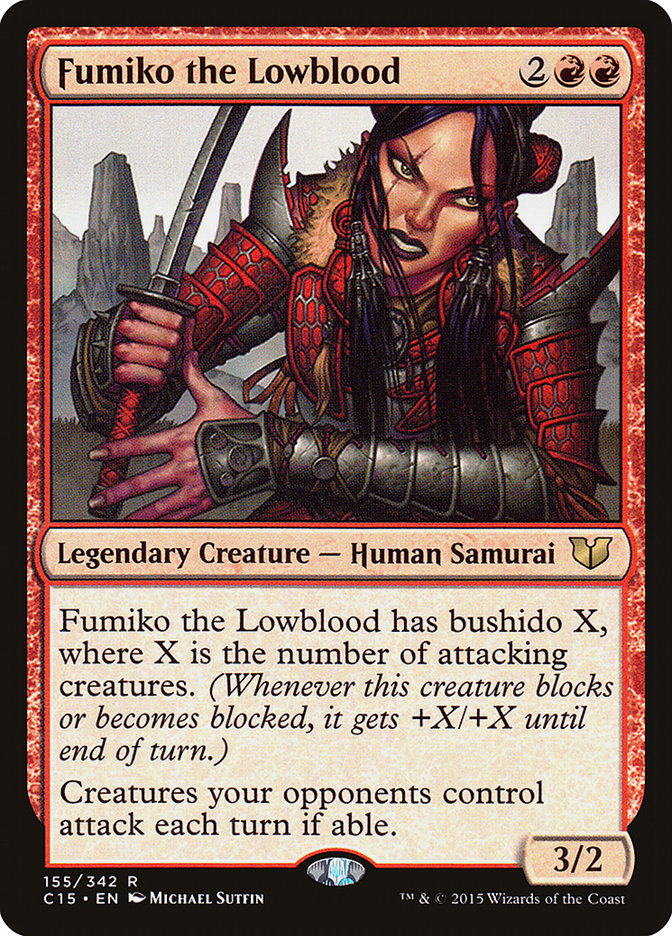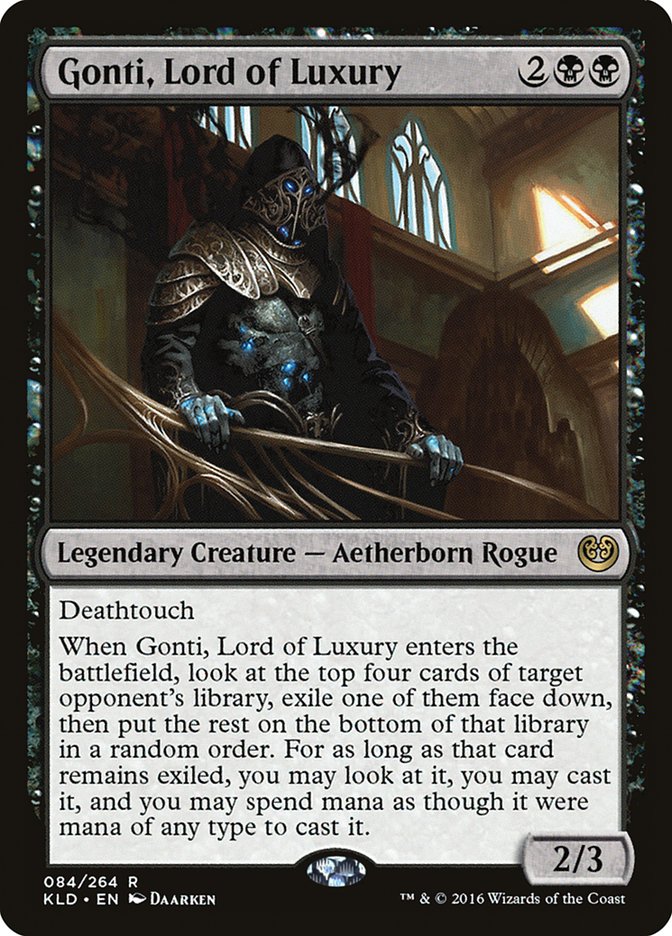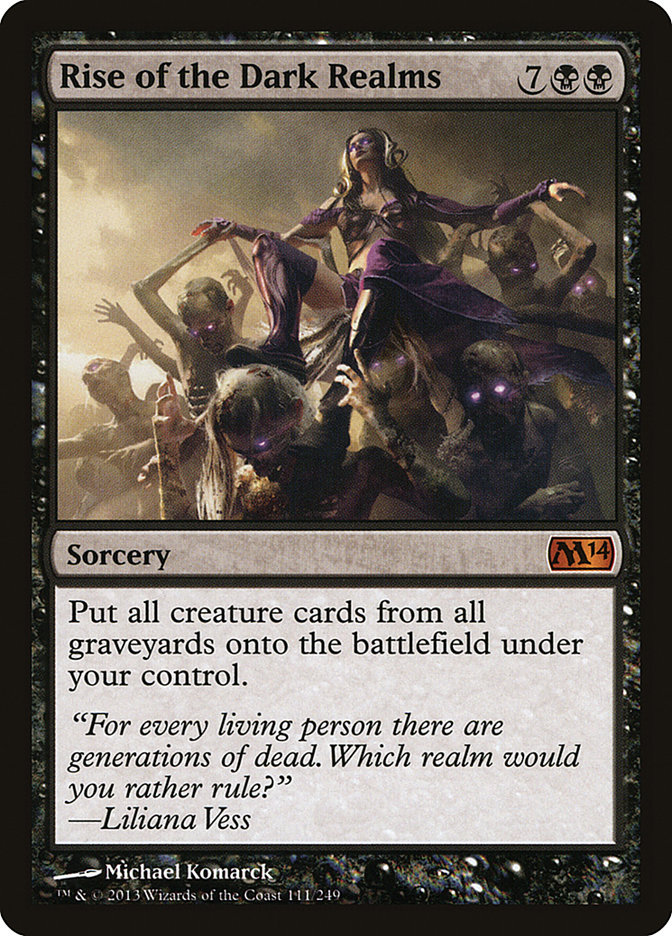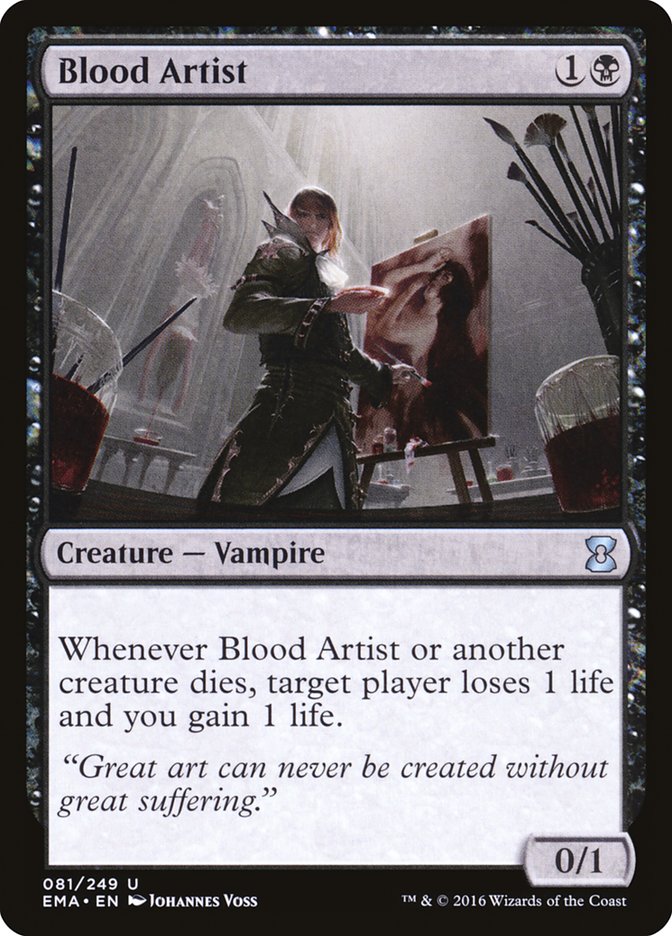Just over two years ago, I finished the Chromatic Project, an effort to build a deck of each of the 27 possible color combinations. The release of Commander 2016 opened possibilities for five new combinations which we hadn’t yet seen: four-color commanders. I mulled over which of the five to start with and landed on Yidris, Maelstrom Wielder.
Given my Temur Problem, I knew that I’d start with Temur plus white or black. We’ve already chosen commanders for our next Rotisserie Draft League, and I ended up with Kynaios and Tiro of Meletis (they were randomly determined). I didn’t want to build that one twice (and I don’t yet want to talk about my draft strategy), so Yidris was the easy choice here. In my Commander 2016 review, Yidris was my favorite multicolored card, merely reinforcing the choice.
Methodology
It’s tempting to say “first I did this and then I did that,” but we all know that, when building a deck, our subconscious and experience are working more holistically and less in a linear fashion. Before I started thinking about what kinds of strategy I wanted to employ, I resolved to add as many of the new Commander 2016 cards as was reasonable, focusing especially on those in the Entropic Uprising deck. It turns out that I didn’t add all that many, but I’m pretty happy about the ones I did. I also looked at the reprints in the Entropic Uprising deck for some inspiration (like the sort-of-obvious Whispersilk Cloak).
Another choice was to not simply recreate one of my existing Temur decks splashing black. All of them focus on their commanders, and I wanted to do the same here. There will obviously be some card similarities, but thematically, a new direction was in order. Avoiding the “good stuff” cards is always a struggle; it would be an easy temptation to just build the best individual cards in all four colors. I also didn’t want to simply create a different version of the preconstructed deck. That’s an exercise for another time.
Capturing Yidris’s ability means two things: dealing combat damage and casting spells on your turn after combat. One of the things to pay attention to is that you don’t want to cascade into spells which are useless—it would be pretty lousy to Overrun post-combat. Let’s look at the list, and then I’ll talk further about how we got there.
Side note: If the first Yidris alter which Eric Klug paints somehow does not involve Idris Elba, I will be thoroughly disappointed.
Creatures (32)
- 1 Fumiko the Lowblood
- 1 Solemn Simulacrum
- 1 Sun Quan, Lord of Wu
- 1 Wood Elves
- 1 Yavimaya Elder
- 1 Coiling Oracle
- 1 Mulldrifter
- 1 Farhaven Elf
- 1 Puppeteer Clique
- 1 Lord of Extinction
- 1 Oracle of Mul Daya
- 1 Urabrask the Hidden
- 1 Edric, Spymaster of Trest
- 1 Malignus
- 1 Blood Artist
- 1 Maelstrom Wanderer
- 1 Rubblehulk
- 1 Diluvian Primordial
- 1 Thassa, God of the Sea
- 1 Xenagos, God of Revels
- 1 Courser of Kruphix
- 1 Reclamation Sage
- 1 Pathbreaker Ibex
- 1 Leovold, Emissary of Trest
- 1 Regal Behemoth
- 1 Gonti, Lord of Luxury
- 1 Rashmi, Eternities Crafter
- 1 Noxious Gearhulk
- 1 Kydele, Chosen of Kruphix
- 1 Stonehoof Chieftain
- 1 Ikra Shidiqi, the Usurper
- 1 Thrasios, Triton Hero
Planeswalkers (2)
Lands (37)
Spells (27)
- 1 Sensei's Divining Top
- 1 Time Warp
- 1 Scroll Rack
- 1 Kodama's Reach
- 1 Beacon of Unrest
- 1 Beacon of Tomorrows
- 1 Turnabout
- 1 Whispersilk Cloak
- 1 Greater Good
- 1 Skyshroud Claim
- 1 Lurking Predators
- 1 Bear Umbra
- 1 Momentous Fall
- 1 Elixir of Immortality
- 1 Cultivate
- 1 Genesis Wave
- 1 Sword of Feast and Famine
- 1 Warstorm Surge
- 1 Cyclonic Rift
- 1 Rise of the Dark Realms
- 1 Villainous Wealth
- 1 Palace Siege
- 1 Arachnogenesis
- 1 Zendikar Resurgent
- 1 Mind's Dilation
- 1 Selvala's Stampede
- 1 Panharmonicon

Instead of going card by card, I’ll break things down into the deck’s packages. It’s clear that I concentrated on cards from the latest sets, not just due to the new and shiny factor but because they are super-solid cards.
Top of the Library Control
The most important factor in cascading is understanding what might be coming up and having some control over it. To that end, Sensei’s Divining Top and Scroll Rack were at the top of my list. With Scroll Rack, I can either put the most expensive spell I can afford to cast on top or set up something from my hand that I’d like to cascade into.
Sensei’s Divining Top does that to some small amount. Even putting the Top back on top and cascading into it after setting up the other two cards is a sweet move. Oracle of Mul Daya and Courser of Kruphix add to the package by at least letting me know what the top card is. With Oracle of Mul Daya on the battlefield, I can put two lands on top with Scroll Rack, and all is good. Additionally, Scroll Rack and Top can keep me from being forced to cast an instant or sorcery at an awkward time. There aren’t that many, but I’d rather not be forced into wasting Cyclonic Rift or Arachnogenesis. Thassa, God of the Sea is also some kind of top-of-library control, but its biggest thing is making Yidris unblockable.
Top-of-library control led me to Lurking Predators. Obviously, it’s just a great card anyway, but add to its simple goodness the ability to determine what it is that I get, especially in a deck with (for me) a low creature count of 32, and I’m off to the races and rocket-fueled. Lurking Predators led me to Mind’s Dilation and a “money for nothing” theme. People are going to cast spells, right? I might as well benefit from all their hard work.
Furthering the Cascade
Maelstrom Wanderer and Rashmi, Eternities Crafter offer extra cascades (although the latter doesn’t have the keyword, it’s close enough for me). The bigger part of furthering the cascade is either doubling up my mana (Zendikar Resurgent and Regal Behemoth) or getting lands untapped (Bear Umbra, Sword of Feast and Famine, Turnabout). This way, I can cast spells before combat if I need to. It’s probably more important to do so with creatures and a haste-giver (Maelstrom Wanderer, Urabrask the Hidden) on the battlefield so whatever creatures I cast can join the attack. Post-combat, I can then cast the most expensive thing for the juiciest cascade.
Diluvian Primordial is another one which gets extra cascades, since it casts the other spells. There’s almost always something supremely useful in other players’ graveyards, and even if there’s only something suboptimal (as long it’s not detrimental to me), I’ll probably just cast it to get the cascade.
Cascading got me into a few time-magic spells. I knew Time Warp would be one of them, but I debated over the long-term additional potential uses of Beacon of Tomorrows versus one of the others. Expropriate certainly hit my radar, but I wanted to focus on something cheaper, since the deck was getting a little mana-heavy.
Finally, all the creatures entering the battlefield, especially off a big Genesis Wave or Villainous Wealth, got me to Warstorm Surge. Obviously, Malignus or Lord of Extinction plus Warstorm Surge might mean game over for someone.
Combat
It’s no secret that I love getting into the Red Zone. This deck gets in with a vengeance. Impossibly large creatures like Lord of Extinction or Malignus can wreck life totals rather quickly. Pathbreaker Ibex or a nice Garruk Wildspeaker Overrun will deal piles of damage—which is even saucier with Ikra Shadiqi, the Usurper on the battlefield. And there are few things better at generating damage than Xenagos, God of Revels.
Obviously, Yidris connecting in combat is important. I had at one time considered just a Voltron build, but I better like the playability of this version. Kessig Wolf Run and Rubblehulk are vestiges of a commander damage version which seemed like they’d fit into any battling deck. Sun Quan, Lord of Wu will break a combat stalemate; no one else is playing cards with horsemanship, so my creatures become effectively unblockable. Rogue’s Passage and the aforementioned Thassa, God of the Sea will push through whichever creature(s) I might want or need to get through.
One direction which I considered but didn’t go for is the extra combat step (since nothing beats cascading except cascading more). Aggravated Assault, Hellkite Charger, Savage Beating, or even World at War might be directions to take the deck. I decided, especially with Bear Umbra and Sword of Feast and Famine, that I didn’t want to create infinite combats.
Fumiko the Lowblood is in the deck in order to make combats easier for me to navigate. If everyone else is forced to attack, the path is more open for me. It can also lead people into unfavorable attack situations, which is effectively creature removal. Edric, Spymaster of Trest is there both for me to take advantage of and to motivate opponents to attack in other directions. Of course, with Edric’s creepy cousin Leovold, Emissary of Trest running around, extra card draw isn’t happening. Urabrask the Hidden is also intended to make my combat life easier by putting opponents’ creatures onto the battlefield tapped. Even if they have haste, they won’t be able to attack; they certainly won’t be able to block.
Ramp
There are quite a few expensive spells in the deck, so some early ramp will do wonders. Of course, in every U/G/x (or now U/G/x/x) deck, Coiling Oracle is going to be an MVP. Other creature-based ramp includes Courser of Kruphix (kind of), Oracle of Mul Daya, Solemn Simulacrum, and Wood Elves, plus the always-useful Yavimaya Elder (which isn’t technically ramp, but it’s certainly the way to get just the right basic lands). Cultivate, Kodma’s Reach, and Skyshroud Claim are winners that you don’t mind cascading into, since they set up bigger ensuing turns. Skyshroud Claim is why nearly every dual land with Forest as one of its types is in the deck. Nissa, Nature’s Artisan, especially in concert with Scroll Rack or Sensei’s Divining Top, can also function as ramp.
Other Things
I won’t go on to mention all the cards in the deck, but you can see there are some utility players in both creatures and spells. Panharmonicon (not, it’s not getting banned, it’s staying around to create extreme absurdity) and Gonti, Lord of Luxury are just hilarious together, particularly when Gonti returns to my hand via Palace Siege.
Ditto for Noxious Gearhulk. I debated between Rise of the Dark Realms and In Garruk’s Wake. I ended up going with the former because for once I want someone else to take care of killing all the creatures. My creature suite is pretty good, so I’ll instead go with stuff which punishes people for killing all the creatures, like Rise of the Dark Realms and Blood Artist.
Thinking down this line made me consider a no-kidding graveyard recursion deck with Yidris at the helm, but I felt like that was too close to the pre-con for my tastes. The deck doesn’t otherwise have that much of a backup plan. Elixir of Immortality might be able to shuffle in everything in order to get going again, but I’m going to rely on the deck’s straightforward aggression to kill people. The extreme long game probably isn’t for me with this one.
All in all, it’s a deck that I’ll have to actively play as opposed to just plopping on the table, a challenge I always enjoy (and one which makes me a better Magic player). It has some fun stuff, will occasionally create the ridiculous battlefield states which we’ve come to love, and does a great job of simply embracing the chaos—although it just now occurs to me that with cascade, Possibility Storm is a thing. We won’t put it in for now, but it could be a future update.
Last Week’s Comments
Craig Spooner asks, “How can you make a Halloween deck without All Hallow’s Eve?”
This is a fair question, and I might have to reconsider its lack of inclusion. I might want to be able to do something about other players’ graveyards first, though. It’s worth some thought, though.
Mike Delissovoy writes, “I’m surprised you included Saffi/Reveillark combo in your deck. It doesn’t look like you can go infinite because Greater Good is your only free sac rificeoutlet and you’d have to have a pretty large deck to survive even a Kokusho loop. Have you ever won a game off looping them?”
I haven’t. Saffi Eriksdottir and Reveillark are simply trips to value town in the deck. I generally don’t think in infinite loops. For example, in Kresh, a deck with a great number more free sacrifice outlets, it didn’t occur to me that Woodfall Primus / Melira, Sylovk Outcast was infinite until it showed up in a game—immediately after which I took out the latter card. Sometimes you don’t need an infinite loop on things, just a few iterations. I’m pretty sure that I’ve won games with looping Kokusho, the Evening Star two or three times to finish off some players.
Karel Rodriguez says, “It is funny how you said ‘Both Tom and I are playing somewhat similar Karador, Ghost Chieftain builds’ and there are actually only nineteen spells that appear in both decks, including the Commander.,38 out of 100 including the lands. Similar in concept but the options are so massive, the decks actually are less than 40% equal. This is why I love this format.”
I agree wholeheartedly. It’s also why I don’t mind playing Karador-on-Karador matchups. We once did a 4x Karador game which was suitably absurd. We also did a 4x Karador plus one Anafenza, the Foremost. You can imagine who got killed first in that one.
This Week’s Deck Without Comment
Creatures (36)
- 1 Exalted Angel
- 1 Solemn Simulacrum
- 1 Platinum Angel
- 1 Lord of the Pit
- 1 Akroma, Angel of Wrath
- 1 Karmic Guide
- 1 Angel of Despair
- 1 Teysa, Orzhov Scion
- 1 Darien, King of Kjeldor
- 1 Endrek Sahr, Master Breeder
- 1 Knight of the White Orchid
- 1 Xathrid Demon
- 1 Emeria Angel
- 1 Admonition Angel
- 1 Abyssal Persecutor
- 1 Pestilence Demon
- 1 Sun Titan
- 1 Tariel, Reckoner of Souls
- 1 Rune-Scarred Demon
- 1 Reaper from the Abyss
- 1 Bloodgift Demon
- 1 Ravenous Demon
- 1 Requiem Angel
- 1 Restoration Angel
- 1 Avacyn, Angel of Hope
- 1 Harvester of Souls
- 1 Blood Artist
- 1 Deathpact Angel
- 1 Crypt Ghast
- 1 Lord of the Void
- 1 Shadowborn Demon
- 1 Burnished Hart
- 1 Butcher of the Horde
- 1 Demon of Wailing Agonies
- 1 Exquisite Archangel
- 1 Rampaging Ferocidon
Planeswalkers (2)
Lands (36)
Spells (27)
- 1 Wrath of God
- 1 Land Tax
- 1 Sol Ring
- 1 Aura of Silence
- 1 Holy Day
- 1 Darksteel Ingot
- 1 Akroma's Vengeance
- 1 Decree of Pain
- 1 Grab the Reins
- 1 Phyrexian Reclamation
- 1 Boros Signet
- 1 Orzhov Signet
- 1 Rakdos Signet
- 1 Return to Dust
- 1 Batwing Brume
- 1 Phyrexian Rebirth
- 1 Black Sun's Zenith
- 1 Gruesome Encore
- 1 Pristine Talisman
- 1 Martyr's Bond
- 1 Boros Charm
- 1 Whip of Erebos
- 1 Crackling Doom
- 1 End Hostilities
- 1 Mardu Banner
- 1 Mastery of the Unseen
- 1 Marchesa's Decree

Check out our comprehensive Deck List Database for lists of all my decks:
SIGNATURE DECKS
Purple Hippos and Maro Sorcerers; Kresh Into the Red Zone; Halloween with Karador; Dreaming of Intet; You Did This to Yourself;
THE CHROMATIC PROJECT
Mono-Color
Heliod, God of Enchantments; Thassa, God of Merfolk; Erebos and the Halls Of The Dead; Forge of Purphoros; Nylea of the Woodland Realm; Karn, Beatdown Golem
Guilds
Lavinia Blinks; Obzedat, Ghost Killer; Aurelia Goes to War; Trostani and Her Angels; Lazav, Shapeshifting Mastermind; Zegana and a Dice Bag; Rakdos Reimagined; Glissa, Glissa; Ruric Thar and His Beastly Fight Club; You Take the Crown, I’ll Take Leovold; Gisa and Geralf Together Forever;
Shards and Wedges
Adun’s Toolbox; Animar’s Swarm; Karrthus, Who Rains Fire From The Sky; Demons of Kaalia; Merieke’s Esper Dragons; Nath of the Value Leaf; Rith’s Tokens; The Mill-Meoplasm; The Altar of Thraximundar; The Threat of Yasova; Zombies of Tresserhorn
Five-Color
THE DO-OVER PROJECT
Animar Do-Over; Karador Do-Over; Karador Version 3; Karrthus Do-Over; Mimeoplasm Do-Over; Phelddagrif Do-Over; Rith Do-Over; Ruhan Do-Over
If you’d like to follow the adventures of my Monday Night RPG group (in a campaign that’s been alive since 1987) which is just beginning the saga The Lost Cities of Nevinor, ask for an invitation to the Facebook group “Sheldon Menery’s Monday Night Gamers.”


